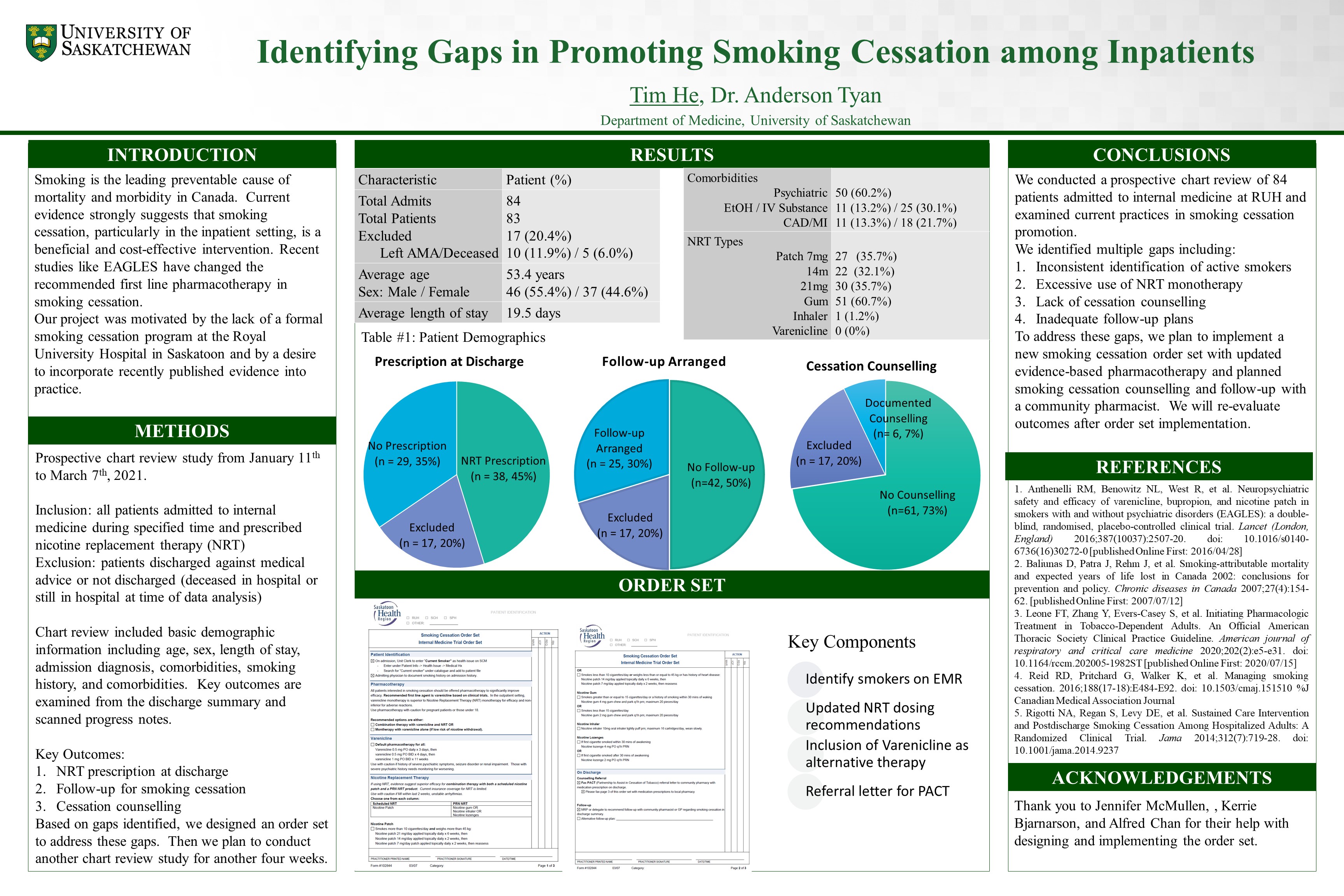
A2.1: Identifying Gaps in Promoting Smoking Cessation among Inpatients
Tim He, Anderson Tyan
Smoking is the leading preventable cause of mortality and morbidity in Canada. Current evidence strongly suggests that smoking cessation, particularly in the inpatient setting, is a beneficial and cost-effective intervention. Our project was motivated by the lack of a formal smoking cessation program at the Royal University Hospital in Saskatoon and by a desire to incorporate recently published evidence into practice. We set out to identify gaps in smoking cessation promotion and then to address those gaps with a new standardized order set.
We performed a prospective chart review of patients admitted to the internal medicine service at RUH and who were prescribed NRT over a pre-specified eight-week period. Preliminary data identified 84 admissions among 83 patients admitted with various diagnoses. The most common comorbidities identified were other substance use disorders, COPD and CAD. 17 patients were excluded from outcome analysis for leaving against medical advice or not leaving hospital. The most frequent NRT prescribed was a nicotine patch in hospital and a combination NRT gum was prescribed in 51/84 (60.7%) patients. NRT was prescribed on discharge in 38/67 (56.7%) patients, follow-up arranged in 25/67 (37.3) patients, and counselling documented in 6/67 (9.0% patients).
Based on preliminary data and existing evidence, we identified four main gaps in local inpatient smoking cessation promotion including: 1) inconsistent identification of active smokers, 2) excessive use of NRT monotherapy, 3) inadequate follow-up plans, and 4) lack of cessation counselling. Our intervention is the introduction of a new smoking cessation order set added to the standard admission packet. The order set prioritizes identifying active smokers in the EMR and recommends Varenicline and combination NRT as pharmacotherapy. For follow-up, a template referral letter to a community pharmacist for smoking cessation counselling through the Partnership to Assist in the Cessation of Tobacco Program is included.
